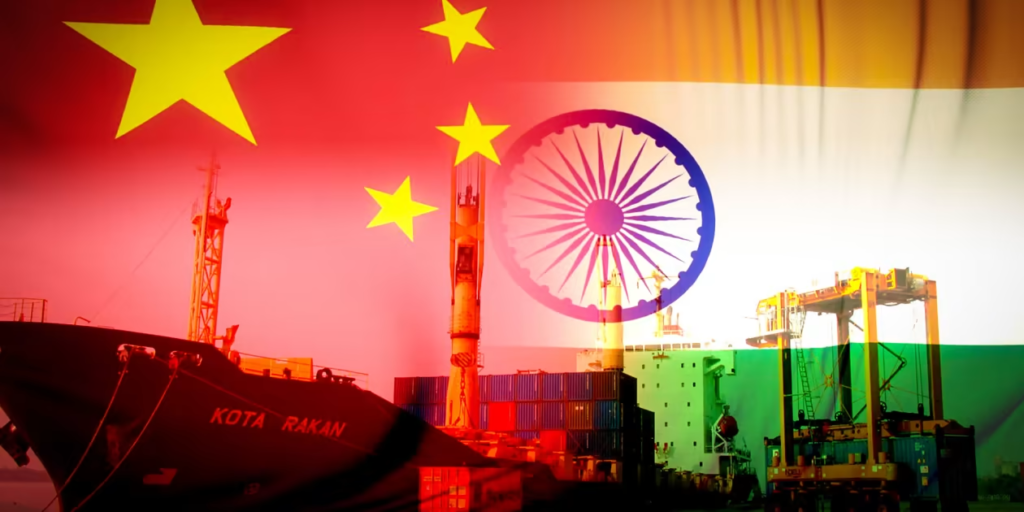With growing geopolitical shifts, India is emerging as a preferred destination for global investments, especially in critical sectors such as defense, telecom, and pharmaceuticals.
Table of Contents
Rising Interest in India’s Expanding Domestic Market
Robert Willen, the global managing partner and chairman of Kearney, has closely observed India’s growth trajectory over the last two decades. Now at the helm of the global consulting firm, Willen is witnessing unprecedented interest in India as companies look to diversify their supply chains beyond China. During recent meetings with clients and colleagues across India, he noted, “We see a great potential here. There’s a domestic market; it’s not just a service market for the rest of the world. India’s growth is driving a new vision, one that prioritizes the country’s own aspirations and capabilities.”

With multinational companies reassessing supply chains, the spotlight is on India’s substantial domestic market, which offers growth opportunities in both manufacturing and services. Companies are increasingly discussing when and how to enter or expand in India, particularly as the government fosters a business environment conducive to large-scale investment.
A Strategic Industrial Policy for India’s Global Positioning
Willen outlined his advice for the Indian government, emphasizing the importance of a well-structured industrial policy to position India as an economic powerhouse. “This is a new era of industrial policy,” he stated, noting that governments worldwide are working closely with industries and investors to establish priorities, create regulatory frameworks, and attract critical investments. Citing the U.S. incentives for indigenous semiconductor production, he suggested that India could adopt similar policies to support local manufacturing, particularly in technology-heavy industries.
Read this also: 7 Must-Visit Winter Carnivals in India You Didn’t Know About
Such an approach would not mean that the government should do everything, Willen clarified. Instead, it requires strategic investments and a supportive regulatory environment that enables private and international players to participate and thrive. This approach, he argued, would boost economic growth while stimulating innovation in India.
India’s Role in the China+1 Strategy: Complementary or Supplementary?
The global shift towards a “China+1” strategy—where companies seek alternative manufacturing bases to reduce dependence on China—is giving India a competitive edge. Although countries like Vietnam and Mexico have gained attention due to their proximity to China and the U.S. respectively, India’s unique advantages are increasingly appealing, particularly in sectors that require security and resilience. Willen explained, “Vietnam replicates China’s efficiency, while Mexico provides proximity to the U.S. For India, it’s about building complementary supply options, especially in sensitive sectors like defense and telecom.”

These security-sensitive sectors are driving companies to seek manufacturing alternatives. The geopolitical concerns surrounding the South China Sea and Taiwan have heightened the need for diversified supply sources. Defense and telecom sectors are particularly poised for expansion in India, as these industries require robust infrastructure and a stable environment—areas where India excels.
Supply Chain Resilience: Early Shifts Away from China
While a complete shift in global supply chains is still at an early stage, discussions about diversification are gaining momentum. Willen shared that while China remains a dominant player in global shipping, multinational corporations are actively considering alternative supply routes to improve resilience and responsiveness. “Global shipping trends still show the strength of China, but it’s coming down slowly. Supply chains don’t shift overnight; they need time to develop and mature,” he added.
Read this also: 7 Picturesque Villages in India You Should Visit This Winter
India’s economic stability, skilled workforce, and favorable trade balance with the U.S. make it an attractive option for companies seeking diversified supply chains. A Trump-led administration, with its focus on deglobalization and tariffs, could further accelerate the shift, as India’s low trade deficit with the U.S. aligns well with American economic priorities.
Pharmaceuticals, Batteries, and Manufacturing: Key Sectors to Watch
Several sectors are primed for growth in India, thanks to its established industries and reduced dependency on China. Pharmaceuticals is one area where India has clear advantages, with an existing global footprint and expertise in generic drug manufacturing. Additionally, the battery industry, heavily reliant on China, presents an opportunity for India to strengthen its position as an alternative supplier of critical components.

As India advances its infrastructure and regulatory environment, it is poised to attract investments that can bolster its manufacturing capabilities in these crucial sectors. For many companies with only a minor presence or none at all in India, the potential for scaling operations here is enticing, particularly as they seek new manufacturing hubs.
India’s Academic Growth: Supporting a Skilled Workforce for Global Demand
India’s recent achievement in surpassing China in the QS Asia University Rankings 2025, with 162 institutions making the list, demonstrates its commitment to academic excellence and workforce readiness.
Read this also: Streetwear 2024 in India: Bold Styles, Cultural Fusions, and Sustainable Statements
IIT Delhi leads the way, placing 44th in Asia, while private institutions like Chandigarh University continue to rise. This educational growth aligns with India’s goals of providing a skilled labor force ready to meet the demands of high-tech industries and support its ambition of becoming a manufacturing leader.
India’s Strategic Ascent as an Investment Hub
As companies around the world reassess their supply chains and manufacturing locations, India’s growing reputation as a strong and stable economy is drawing attention. Willen’s insights into India’s market potential and industrial policy suggest that with the right investments and policies, India is well on its way to becoming a preferred partner for global businesses looking beyond China.

India’s combination of a dynamic domestic market, evolving industrial policies, and growing academic prowess is setting the stage for long-term economic success, establishing it as a viable alternative to China in many crucial ways.









[…] Read this also: India Emerges as Top Alternative to China: Kearney’s Robert Willen Sees Surging Interest in Indian… […]
[…] Read this also: India Emerges as Top Alternative to China: Kearney’s Robert Willen Sees Surging Interest in Indian… […]
[…] Read this also: India Emerges as Top Alternative to China: Kearney’s Robert Willen Sees Surging Interest in Indian… […]